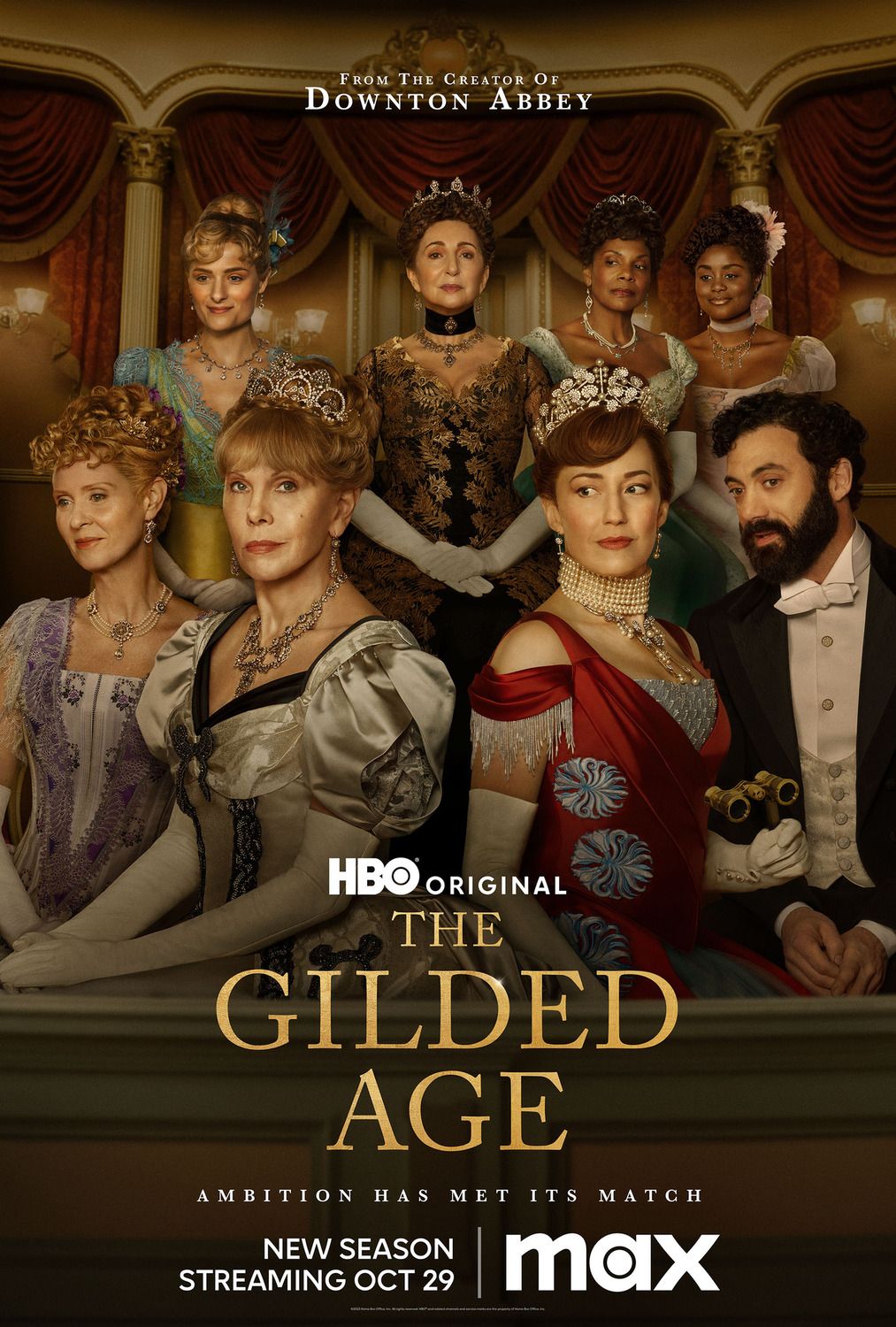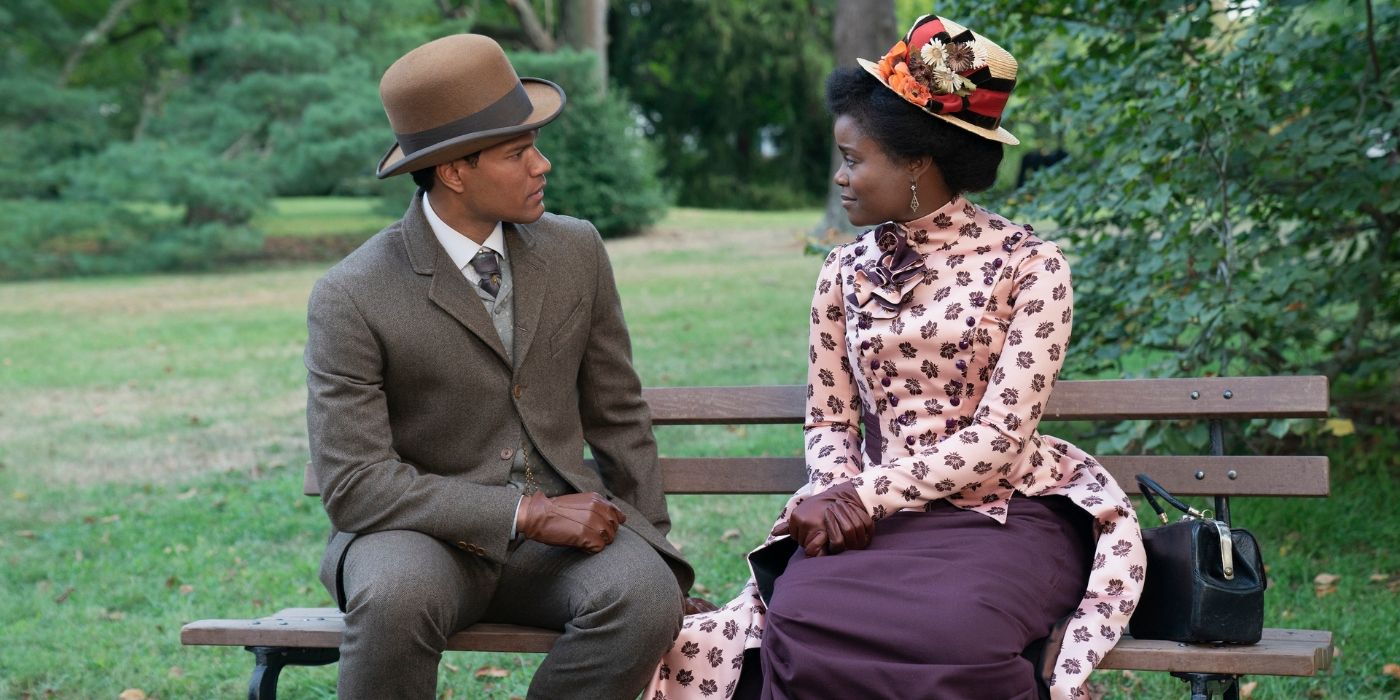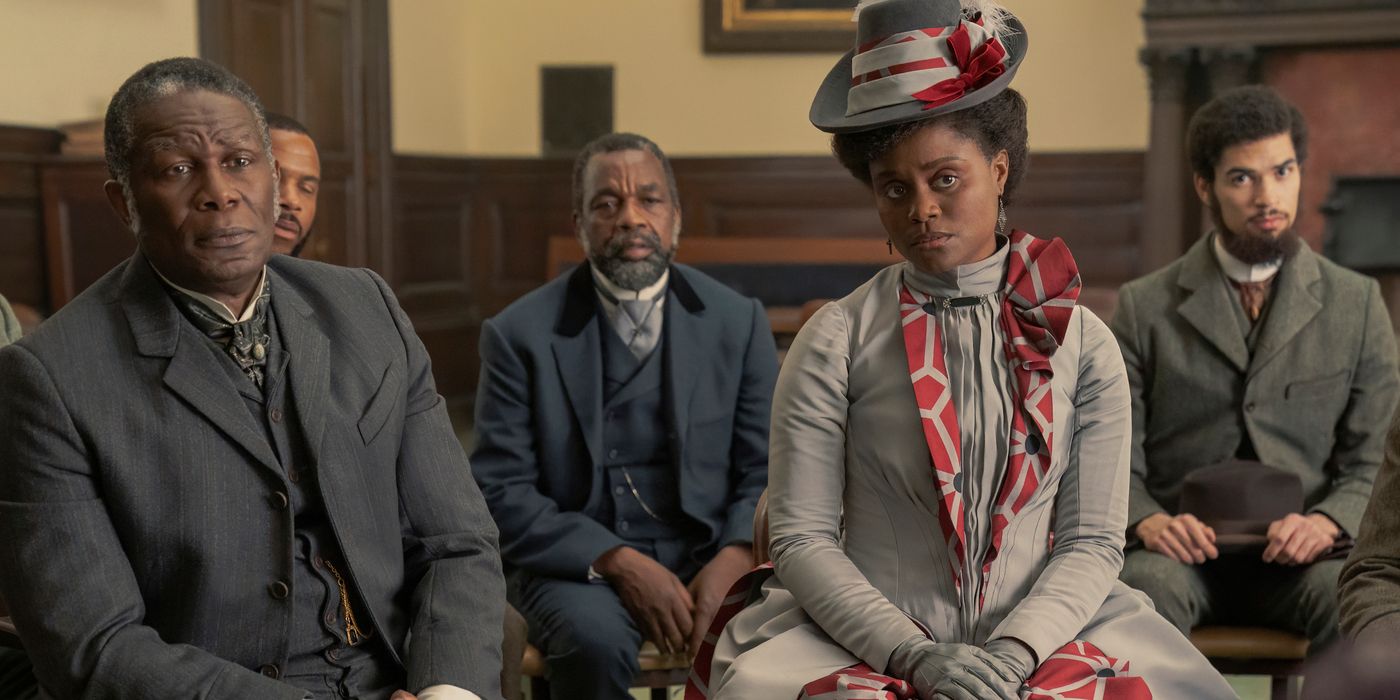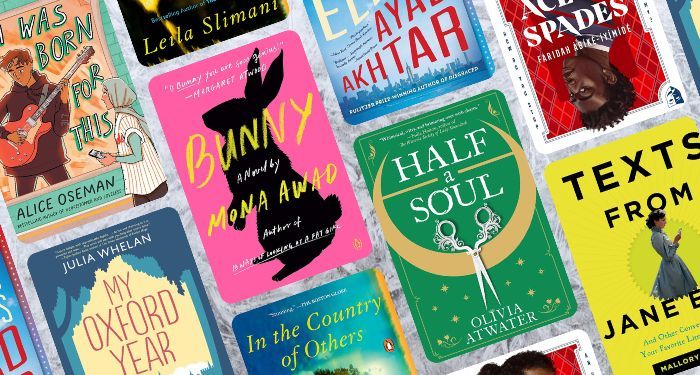Editor’s note: The below contains spoilers for The Gilded Age Season 2.
The Big Picture
- Season 2 of The Gilded Age addresses the struggle of the Black community to keep their schools open. It accurately represents the inequality faced by Black people in that time period.
- The plotline of the attempted closing of the Black schools in the show is inspired by real historical events. The show takes some artistic license, but the basic plot points remain the same.
- The Black community in the show rallies to save their schools by recruiting white students. Two out of three schools are saved, but the Board of Education insists on closing one for their own image.
The Gilded Age often uses historical events in the story, showing a dedication to realism. From the strike against George Russell’s (Morgan Spector) company to the woman who tricked Oscar van Rhijn (Blake Ritson) out of his money, the show has many elements inspired by the truth, but they are not exact. The fictional nature of the show requires some changes to fit the narrative, which often involves the exact dates or people involved, but some of the differences are more significant. The Season 2 finale ventures into an upsetting chapter in history as the show follows the leaders of the Black community struggling to keep their schools open. This is not an event as widely discussed as others seen in the show, but it certainly deserves attention. Though, as with anything else, the historical drama takes a few liberties with the story, it is a fairly accurate representation of the inequality and persecution faced by Black people in the time period.
The Gilded Age explored politics many times before, even racism specifically. Peggy Scott (Denée Benton) faced discrimination in her efforts to become a writer and even in her interactions with the staff within the van Rhijns’ household. On a larger scale, this story takes place after Peggy and her editor, T. Thomas Fortune (Sullivan Jones), travel to Tuskegee, Alabama, to write about Booker T. Washington’s (Michael Braugher) Tuskegee Institute. While there, they witness a white man harassing a restaurant owner. When Fortune tries to stop it, he and Peggy are forced to hide from an attack. Though the attempt to close the Black public schools is not as violent, neither in the show nor in reality, it is an example of other forms of racism that existed throughout the country. The Gilded Age ends with a victory for the Black community that was ultimately short-lived, yet the inspiration for the attempted closing of schools is clear.

The Gilded Age
A wide-eyed young scion of a conservative family embarks on a mission to infiltrate the wealthy neighboring clan dominated by ruthless railroad tycoon George Russell, his rakish son, Larry, and his ambitious wife, Bertha.
- Release Date
- January 24, 2022
- Creator
- Julian Fellowes
- Cast
- Carrie Coon , Morgan Spector , Louisa Jacobson , Denée Benton , Taissa Farmiga , Harry Richardson , Blake Ritson , Thomas Cocquerel , Simon Jones , Jack Gilpin , Cynthia Nixon , Christine Baranski , Donna Murphy , Debra Monk
- Genres
- Drama
- Rating
- TV-MA
- Seasons
- 2
- Network
- HBO Max
What Happens to the Black Schools in ‘The Gilded Age’?
In The Gilded Age, Peggy’s family are important members of the community. Her father, Arthur Scott (John Douglas Thompson), owns a drugstore, where he has earned the respect of even the white people he works with. Arthur and his wife, Dorothy (Audra McDonald), inform Peggy about the Education Board’s campaign to close the Black-led schools. Their friend Sarah Garnet (Melanie Nicholls-King) is the principal of one school being targeted. Dorothy explains that the Board claims Black teachers are inferior, giving them a reason to shut down the schools, but in truth, it would only prevent Black children from being educated and put men and women out of their jobs. Peggy writes an article about the issue, exposing the situation many are unaware of, but fighting the smear campaign against the schools isn’t enough.
Sarah Garnet recommends raising their enrollment, specifically by adding white students. Though many Black families don’t like the idea, Arthur acknowledges that it is the only way to get the Board to care. So, the Black community sets to work to try and save their only three schools. Peggy recruits Marian (Louisa Jacobson) to the cause. As a teacher herself, she is able to endorse the schools and encourage white students and teachers to get involved. The first teacher to show interest is Patrick Ryan (Harry Smith), an out-of-work Irish teacher who offers to join the cause and promises others will follow. He admits that the Irish immigrants face their own prejudices, but the alliance helps boost enrollment.
With plenty of pupils, Sarah Garnet turns her attention to their presentation to the Board, which presents its own challenges. Peggy’s articles on the topic anger the Board, leading to them changing the meeting without notifying Sarah Garnet or the Black families. Unfortunately, Arthur hears of the change from one of his suppliers, who is a member of the School Board. He rushes to spread the information, and everyone leaves immediately, though the presentation is not fully prepared. Busting into the meeting, they present their evidence to the reluctant School Board, who refuse to admit wrongdoing. In the end, the logic wins out, with two of the three Black public schools remaining open, yet the Board insists on shutting down one to save their own image. Though the result isn’t exactly what they were hoping for, the community celebrates the survival of two schools, yet they acknowledge that they must watch for the dangers in the future.
What History Inspired ‘The Gilded Age’s Plot?
The plotline is clearly similar to history, though fictional characters were inserted. In 1883, the same year as The Gilded Age was set, segregation ended in the Brooklyn school system, as all public schools were required to admit any student in the area. Over the next several years, the three black schools suffered from defamation of their educators, lack of students, and forced closures as the white population aimed to take them over. Before Brooklyn had an official school system, the Black community founded three schools for their children, which were led and staffed primarily by Black educators. Though the community resisted integration, it was eventually accepted, much like in The Gilded Age. Sarah Garnet was a real educator. Becoming the first Black female principal in the New York public schools, a business owner, and a politically active supporter of women’s suffrage, Garnet’s portrayal as an efficient and passionate woman is seemingly accurate.
However, there are some significant differences in the story. For one thing, though the schools were integrated in 1883, they all remained open until 1887. The first to disappear became a rare success story rather than a sacrifice for the Board of Education’s pride. The area became increasingly populated by white people, specifically immigrants. However, these families expressed concern that school designated for Black students depreciated their property values. In the end, this school was combined with the white school, solving the property value problem. Though the reasoning is cause for concern, this became an early version of a truly integrated school with Black administrators overseeing white educators. The end result parallels The Gilded Age’s partnership between the Black community and the Irish immigrants, though the story isn’t exactly the same.
The other two Black schools lasted a decade longer. When the area around one school became popular, white students began attending, slowly pushing out the Black students. Similar to The Gilded Age, the School Board defamed the Black-run institution and the educators, specifically principal Charles Dorsey. At this point, the school was not exclusively black, but with the principal, most of the faculty, and most of the students being Black, it was regarded as such. The School Board’s solution was to reorganize the district, relocating many of the Black students, who they claimed did not attend regularly and drove down the school’s academic standards. This made the school predominately white, achieving the School Board’s goal. The third and final school was shut down due to low attendance, as the characters struggled with in The Gilded Age, but only after the Board forcefully cut attendance by requiring older grammar grades to transfer. The original building was in demand, and the school relocated to a storefront. At this point, it only had about sixty students and was ultimately shut down because of that.
‘The Gilded Age’s Writers Acknowledge the Reality of this Plot
Not only are the parallels obvious, but the show’s co-writer and executive producer Sonja Warfield confirmed in an interview that this plot was inspired by history. Warfield explained that in their attempts to find important stories for Peggy to write about, one of their historians, Dr. Erica Dunbar, recommended the attempted closing of the schools. Though Warfield admitted the show “took some artistic license,” the basic plot points remain the same. It fits well with the story, not just Peggy and her family’s arc, but it allows other characters to be involved as well. Discussing the process, Warfield said, “They were trying to shut down all of the schools, and because Marian was teaching, then we had this opportunity to bring Marian into that story because the truth was they really needed to get more students, specifically white students. Erica found that nugget, and it worked.” Though it’s not exactly what happens on the show, there is certainly truth to the plot line.
Though The Gilded Age portrays the fight as a success, it only includes the very beginning. Within two decades, all three schools were gone, showing that the characters’ hope will not last. Certainly, there are significant differences as the show gives a moderate victory to the Black families, yet the attitude and reasoning of the School Board is borrowed from history. The Gilded Age demonstrates the prevalent racist attitude directed at Black educators and the School Board’s intent to overtake them with thinly veiled excuses for their actions. The history behind this plot is convoluted and tragic, but The Gilded Age doesn’t shy away from the realities of it.
The Gilded Age is available to stream on Max.























































![Social Media Spring Cleaning [Infographic] Social Media Spring Cleaning [Infographic]](https://imgproxy.divecdn.com/9e7sW3TubFHM00yvXe5zvvbhAVriJiGqS8xmVFLPC6s/g:ce/rs:fit:770:435/Z3M6Ly9kaXZlc2l0ZS1zdG9yYWdlL2RpdmVpbWFnZS9zb2NpYWxfc3ByaW5nX2NsZWFuaW5nMi5wbmc=.webp)
![5 Ways to Improve Your LinkedIn Marketing Efforts in 2025 [Infographic] 5 Ways to Improve Your LinkedIn Marketing Efforts in 2025 [Infographic]](https://imgproxy.divecdn.com/Hv-m77iIkXSAtB3IEwA3XAuouMwkZApIeDGDnLy5Yhs/g:ce/rs:fit:770:435/Z3M6Ly9kaXZlc2l0ZS1zdG9yYWdlL2RpdmVpbWFnZS9saW5rZWRpbl9zdHJhdGVneV9pbmZvMi5wbmc=.webp)
















